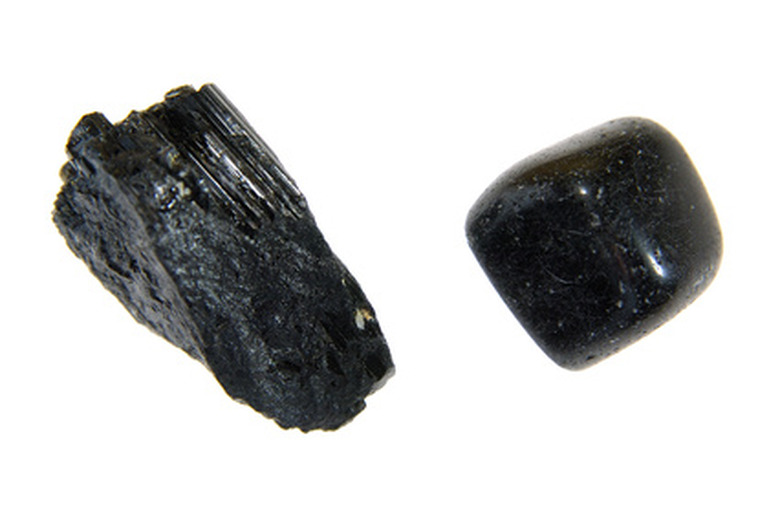How Is Tourmaline Formed?
Tourmaline is a popular, semi-precious gem that is known for the many hues that the mineral naturally displays. The name originates from a Singhalese pair of words, which roughly translate to "stone with mixed colors". In fact, some of these stones can display more than one color at a time or the crystal can change its appearance as the wearer goes from natural daylight to artificial light. The monetary value of tourmaline also varies widely.
Tourmaline has a complex and varied chemical formula
Tourmaline has a complex and varied chemical formula
Tourmaline has a complex and varied chemical formula that is characterized by the presence of boron, one of the naturally occurring elements of the earth. The major source for the boron atom is cooling molten rock, called magma. Along with the boron, tourmaline contains silicon, aluminum and several hydrate molecules. Tourmaline may also contain sodium or calcium, but not both. In addition, lithium, iron or magnesium may be present.
Pegmatite
Pegmatite
Understanding the volcanic formation of pegmatite is basic to knowing how tourmaline is created, for most specimens of the colorful gem are found in veins that run through this kind of igneous rock. Pegmatite is characterized by being coarse-grained and often containing very large crystals. It occurs when magma undergoes a cooling process, but in contrast to other igneous rocks, pegmatite develops from aqueous solutions within the molten magma. These veins of hot liquids tend to be rich in certain earth elements such as silicon and iron. As the watery mix of elements cools and crystallizes, it forms the pegmatite rock, which can contain several different mineral crystals, one of which is tourmaline..
Hypothermal Process
Hypothermal Process
The process by which tourmaline is created is better known as the hypothermal process and it involves not only the water that is undissolved from the hot magma, but rainwater. This mix of water and minerals tends to fill the cracks in the magma as it cools and hardens into rock. As a result, tourmaline (or other similarly created gems) can be found in large veins. Emeralds are formed in a very similar manner, but they contain the element of beryllium instead of boron.
Tourmaline can also be created
Tourmaline can also be created
Tourmaline can also be created by the metamorphic process. In this case, the gem occurs as veins in a schist or marble, two types of metamorphic rocks that are created from pre-existing rocks. In this less common scenario, the key geological force is not hot magma, but rather the geological folding of large rock formations within the earth's crust. Over time the upper layers are worn away to expose the metamorphic rocks and mineral veins.
Worldwide Distribution
Worldwide Distribution
Tourmaline is found in many places throughout the world with especially large deposits located in Brazil, Sri Lanka and South Africa. Other hot spots for this gem, include:
- Nigeria
- Mozambique
- Kenya
- Tanzania
- Madagascar
- Pakistan
- Afghanistan
- Zimbabwe
In the United States tourmaline is most common in California and Maine.
Cite This Article
MLA
Bauholz, Henri. "How Is Tourmaline Formed?" sciencing.com, https://www.sciencing.com/tourmaline-formed-6791252/. 24 April 2017.
APA
Bauholz, Henri. (2017, April 24). How Is Tourmaline Formed?. sciencing.com. Retrieved from https://www.sciencing.com/tourmaline-formed-6791252/
Chicago
Bauholz, Henri. How Is Tourmaline Formed? last modified March 24, 2022. https://www.sciencing.com/tourmaline-formed-6791252/
